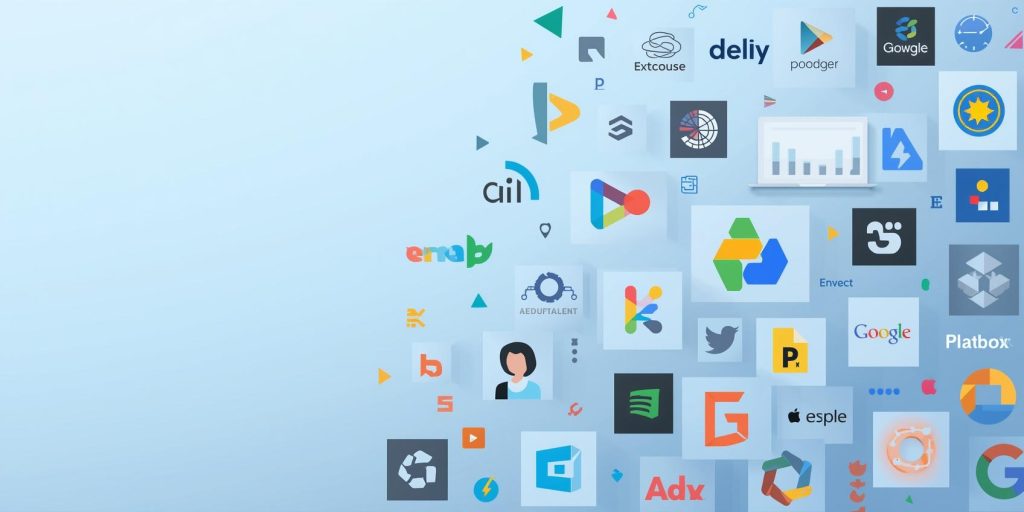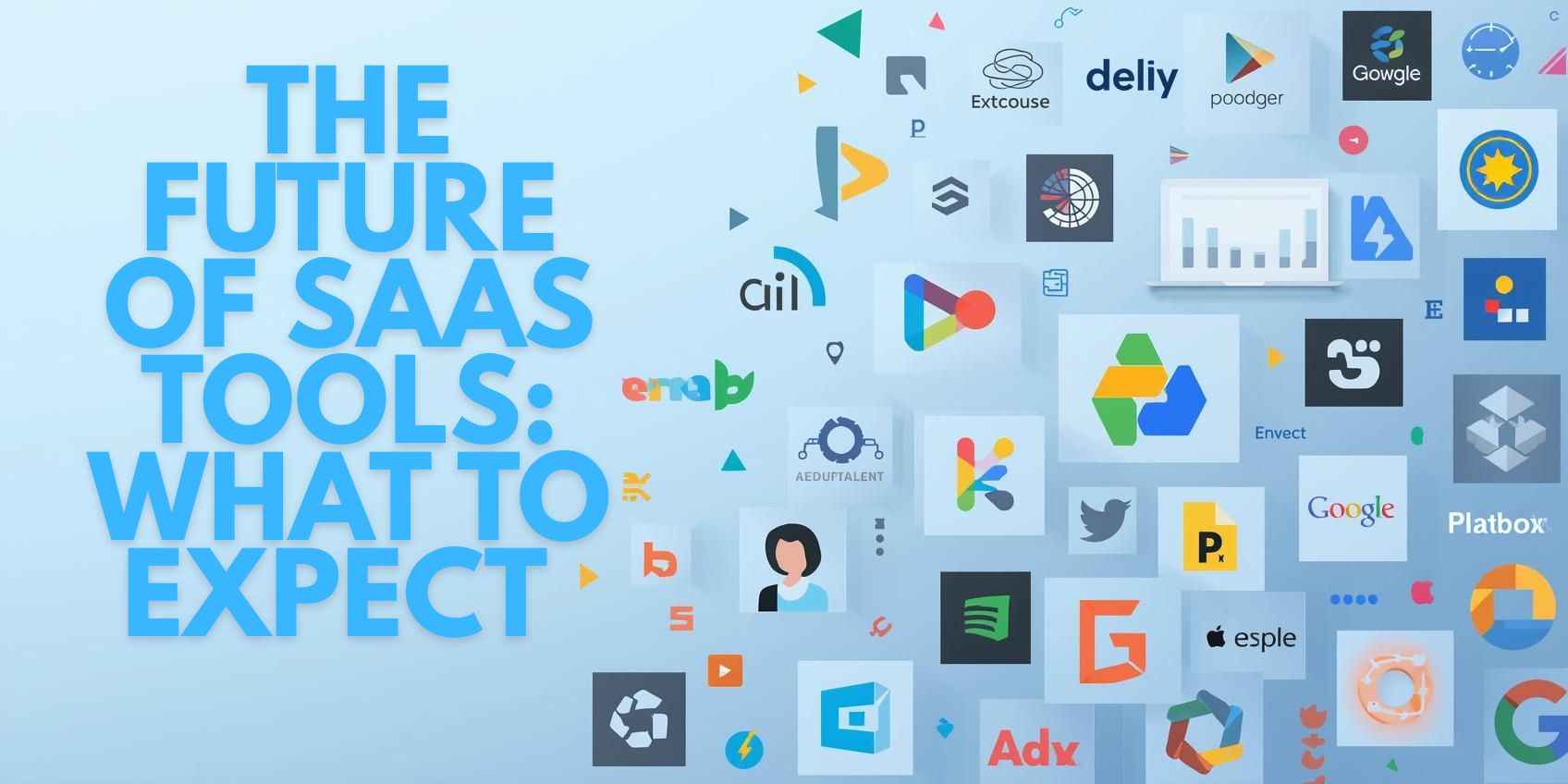In 2015, SaaS was a buzzword. By 2020, it was a business necessity. Now, in 2025, SaaS tools are not just software—they’re ecosystems, lifelines, and strategic partners. From solopreneurs in Dhaka or Bangalore launching digital storefronts to global enterprises managing thousands of workflows, SaaS has become the invisible engine behind modern productivity.
But what’s next?
As we step into a future shaped by AI, hyper-personalization, and modular architecture, the SaaS landscape is undergoing a seismic shift. This article explores the trends, technologies, and transformations that will define SaaS in 2025 and beyond.
📈 1: SaaS in 2025—A Snapshot of the Present
Before we leap forward, let’s anchor ourselves in the now.
- The global SaaS market is projected to reach $299 billion by the end of 2025, up from $197 billion in 2023.
- 99% of businesses use at least one SaaS tool.
- Enterprises deploy an average of 177 SaaS apps, while SMBs use around 80.
- SaaS startups secured 47% of all venture capital funding in 2023.
Clearly, SaaS is no longer optional—it’s foundational. But this explosive growth has also led to challenges: SaaS sprawl, shadow IT, and integration fatigue. The future must solve these problems while unlocking new possibilities.
🤖 2: AI-Powered Everything
AI is no longer a feature—it’s the backbone.
What’s Changing:
- AI-driven personalization: SaaS tools now learn user behavior and adapt interfaces, workflows, and recommendations accordingly.
- AI agents: Beyond chatbots, these agents automate complex tasks like onboarding, customer support, and even coding.
- Predictive analytics: SaaS platforms forecast trends, churn, and performance with uncanny accuracy.
Real-World Example:
Imagine a Bangladeshi e-commerce founder using an AI-powered CRM. It doesn’t just track leads—it predicts which ones will convert, suggests personalized email sequences, and even drafts them in Bengali.
SEO Tip:
Keywords like “AI SaaS tools,” “AI-powered CRM,” and “predictive SaaS analytics” are trending. Use them in your content strategy.
🧩 3: Modular, Scalable, and Vertical
The age of one-size-fits-all SaaS is over.
Rise of Vertical SaaS:

These are tools built for specific industries—garments, healthcare, education, logistics. They speak the language of the sector and solve niche problems.
- The vertical SaaS market is expected to reach $157.4 billion by 2025, growing at a 23.9% CAGR.
Modular Architecture:
SaaS platforms are becoming Lego sets. Users can pick and choose modules—billing, analytics, localization—based on their needs.
Bangladesh Angle:
Garment factories in Dhaka are adopting vertical SaaS for capacity planning, compliance, and export documentation. These tools integrate with Excel, support Bengali, and offer mobile dashboards for floor managers.
💸 4: Usage-Based Pricing & Micro SaaS
Forget flat subscriptions. The future is flexible.
Usage-Based Pricing:
Customers pay based on actual usage—tokens consumed, queries executed, minutes used. This model improves retention and aligns cost with value.
Micro SaaS:
These are tiny, hyper-focused tools built by indie developers. Think of a Bengali invoice generator for freelancers or a plugin that localizes Shopify stores for Dhaka-based sellers.
Strategic Insight:
Shohel, your goal of launching a subscription business for trending SaaS tools fits perfectly here. Micro SaaS is ripe for localization, SEO, and creator partnerships.
🔐 5: Security, Compliance & Trust
With great power comes great responsibility.
Key Trends:
- Zero-trust architecture: Every access request is verified, even within internal networks.
- AI-driven security: Real-time threat detection and automated incident response.
- Compliance automation: SaaS tools now help businesses stay compliant with GDPR, CCPA, and local data laws.
Bangladesh Context:
As more SaaS tools enter the Bangladeshi market, compliance with local data protection laws will become crucial. Expect SaaS platforms to offer region-specific compliance modules.
📱 6: Mobile-First & Offline-Ready SaaS
In emerging markets, mobile is king.
What’s Emerging:
- Mobile-first design: SaaS tools are optimized for smartphones, not desktops.
- Offline functionality: Users can work without internet and sync later.
- Lightweight apps: Designed for low-bandwidth environments.
Local Impact:
A field sales rep in Chittagong can now update CRM entries offline, sync them later, and receive AI-generated follow-ups—all from a budget Android phone.
🌍 7: Global SaaS, Local Flavor
Localization is no longer a nice-to-have—it’s a growth strategy.
Trends:
- Multilingual interfaces: Bengali, Hindi, Arabic, and other languages are being added to global SaaS platforms.
- Cultural UX: Design elements reflect local norms—date formats, currency, even color psychology.
- Localized SEO: SaaS companies are optimizing for regional search terms and marketplaces.
Shohel’s Edge:
Your expertise in Bengali localization and SEO meta content is a strategic asset. SaaS companies expanding into Bangladesh need partners who understand both language and market psychology.
🧠 8: SaaS + Creator Economy
SaaS is becoming the toolkit of the creator economy.
What’s Happening:
- Tools for YouTubers, podcasters, and solopreneurs: From thumbnail generators to AI voiceovers.
- Subscription bundles: Creators offer SaaS-powered services—courses, templates, automation flows.
- Affiliate ecosystems: SaaS platforms reward creators for driving signups.
Bangladesh Opportunity:
Imagine a creator bundle for Bangladeshi YouTubers: AI voice tools (like ElevenLabs), thumbnail design, SEO optimization, and local payment integration—all in one subscription.
🧠 9: SaaS for Strategic Decision-Making
SaaS is evolving from operational to strategic.
Features:
- Executive dashboards: Real-time metrics across departments.
- Scenario modeling: Forecasting based on multiple variables.
- Boardroom-ready reports: Auto-generated insights for investors and stakeholders.
Use Case:
A SaaS founder in Dhaka preparing for Series A funding can use these tools to model growth, churn, and CAC—all in investor-friendly formats.
🧪 10: The Experimental Future—What’s on the Horizon?
Let’s peek into the lab.
- No-code AI builders: SaaS platforms that let users build AI workflows without coding.
- Voice-first SaaS: Tools operated entirely by voice—ideal for accessibility and mobile users.
- SaaS + Blockchain: Decentralized identity, smart contracts, and secure data sharing.
Wild Card:
Could we see a Bengali voice-operated SaaS dashboard for garment production? With your creative direction, Shohel, it’s not far-fetched.
🧭 Conclusion: Navigating the SaaS Future
The future of SaaS is not just about technology—it’s about people, problems, and possibilities.
For founders, marketers, and creators in Bangladesh and beyond, 2025 offers a playground of innovation. Whether you’re building micro SaaS tools, localizing global platforms, or crafting SEO-rich content for niche audiences, the opportunities are vast.
So, what should you do next?
- Audit your SaaS stack: Are your tools future-ready?
- Explore vertical SaaS: Can you build or market tools for your industry?
- Invest in localization: Bengali interfaces, regional SEO, and cultural UX are growth levers.
- Partner with creators: Bundle SaaS tools for niche audiences.
- Stay curious: The SaaS revolution is just beginning.
